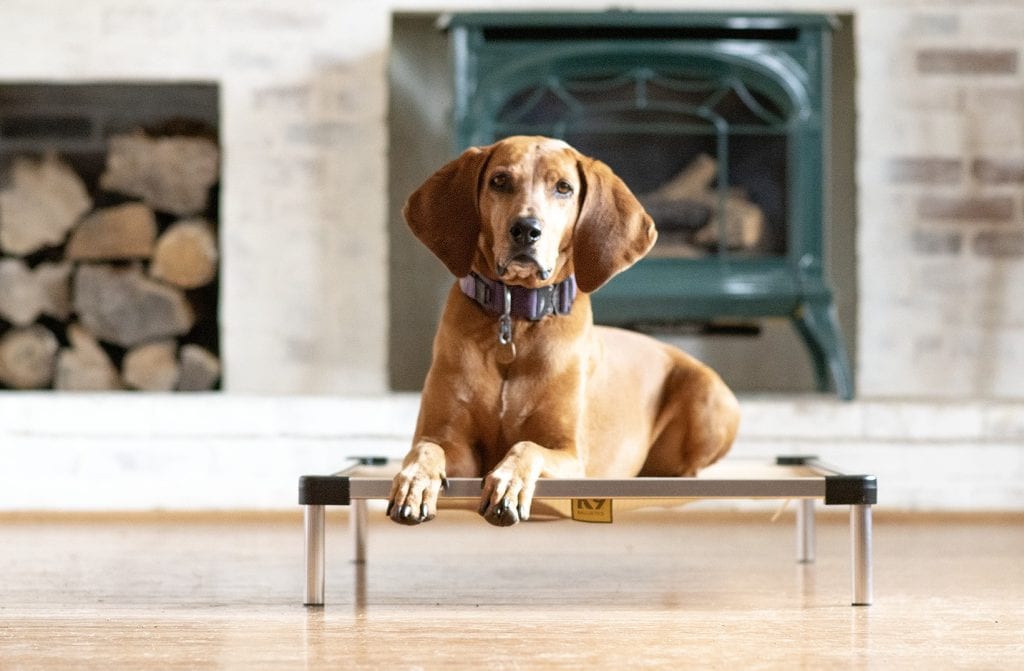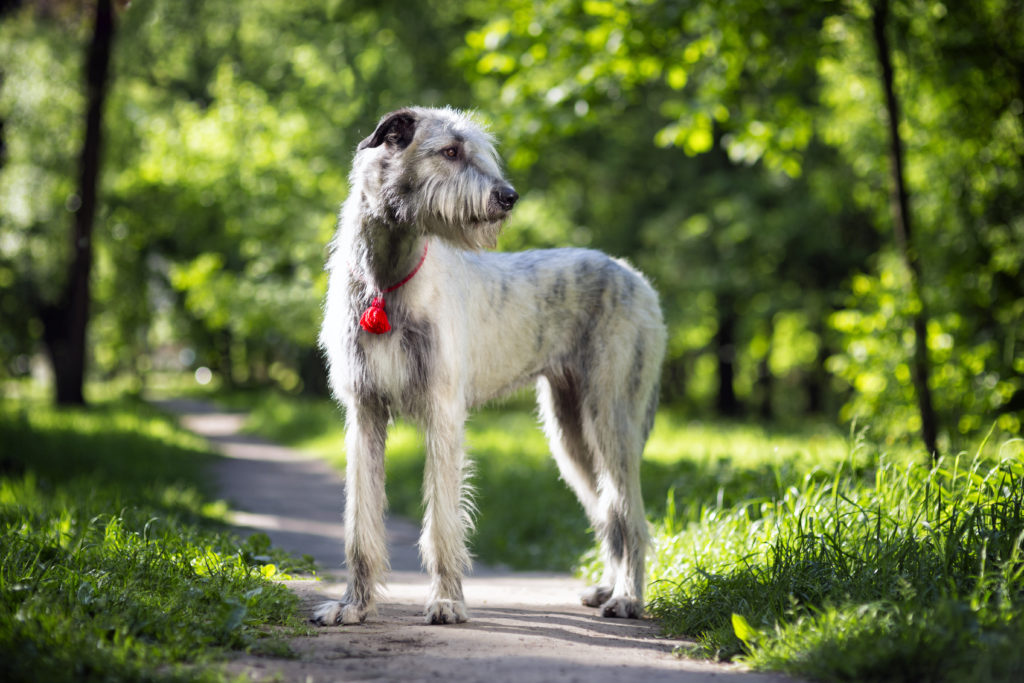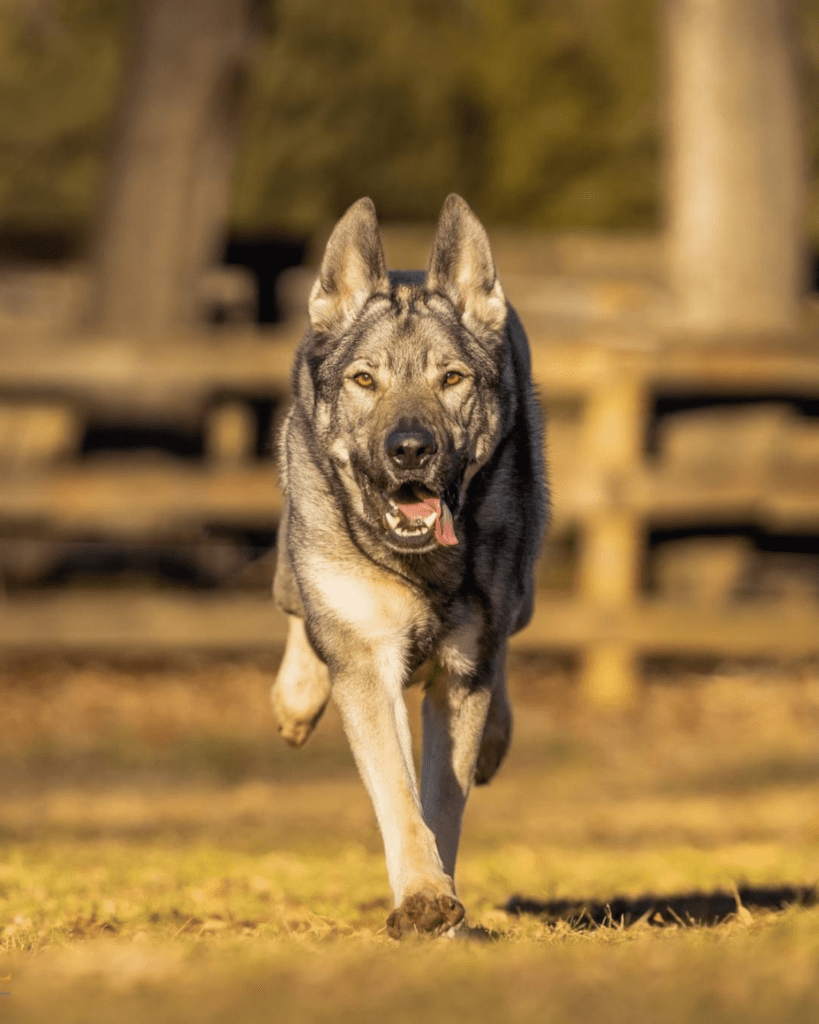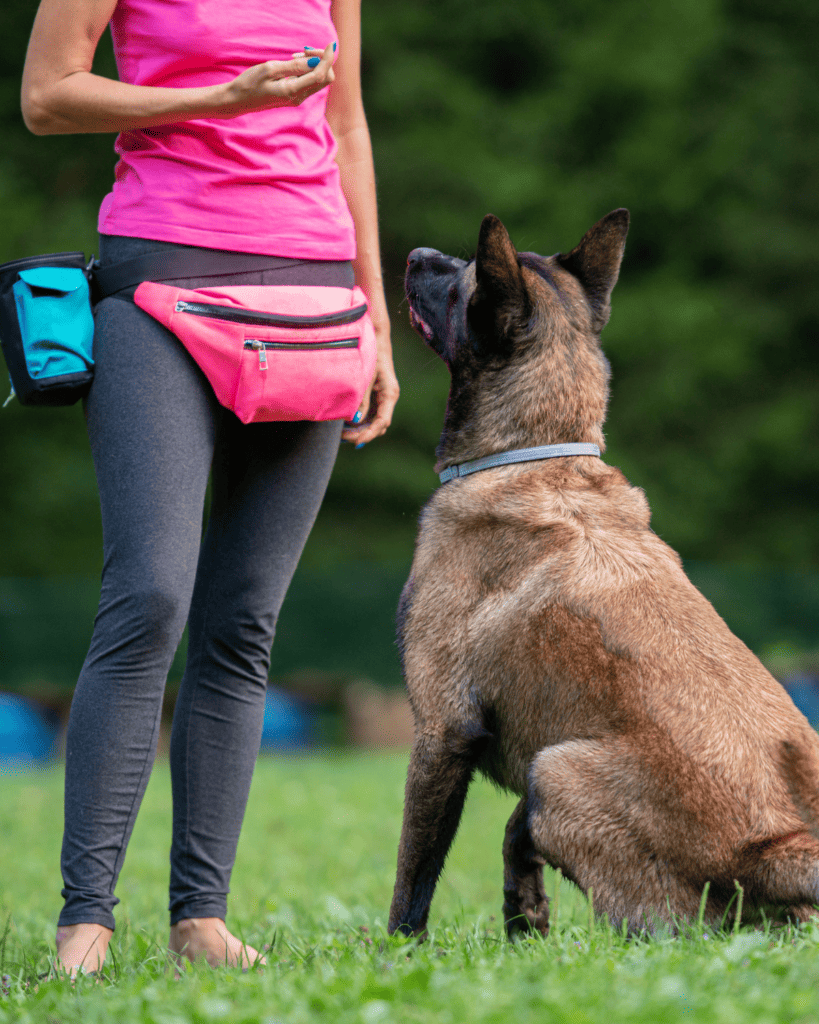Do I Have To Be My Dog’s Boss?
By admin / September 12, 2024 / No Comments / Small Animals
SEO Content Brief: “Do I Need to Be My Dog’s Boss?”
Welcome to one of the biggest bug bears of modern dog training, the question of “Do I need to be my dog’s boss?”
The really short answer to this is no, you don’t. It’s based on some seriously outdated methodology that science has rejected for over 30 years.
Honestly, I think most dog trainers of merit are probably sick to death of hearing the “boss” malarkey – but I want to put some time in and actually discuss it. So, if you’re ready? Let’s dive in.

What Do We Mean By Being Their “Boss” in Dog Training?
This is usually wherein the trouble lies. Because the intention of “Show them who’s boss” is founded and rooted in dominance theory. Usually, it refers to a highly punishment based method of dog training. Usually, this comment or instruction will commend you for taking physical action with your dog or denying them lots of things.
Honestly, you know the types of instruction this leads to. It’s the “Don’t let them through the door first”, “Eat first”, “humping your leg is a sign they don’t respect you”, “bite them on the ear” and 101 other myths brought to you by the alpha bro dog trainers (such as Ceasar Milan). Usually all in stride of trying to convince you they don’t hurt or that your dog needs to respect you.
And, really, I think part of this is that the concept of being a “boss” was stuck in the 90’s version of being a boss, where you were a hard ass, and everyone bowed down.
However, because there are no standard terms and the industry is loaded with jargon that’s not beginner friendly, you may have come to the conclusion that being a “boss” to your dog means something other than this… and ultimately, your way may be okay, but it’s a word I (as a professional dog trainer) would encourage you to find a different way of expressing, if you can.

The Myth of the Alpha Dog
Picture this: a wild pack of wolves, roaming through a dense forest, led by a single, domineering alpha who maintains order with an iron paw.
This image of the alpha dog has not only captured our imaginations but has also influenced how countless pet owners interact with their dogs for decades. The concept of the alpha dog was born out of early wolf pack studies, where researchers observed captive wolves and concluded that the pack dynamics were all about dominance and submission. It was believed that dogs, as descendants of wolves, required the same strict hierarchy to maintain order.
But let’s hit the pause button on that narrative for a second.
Modern research has rolled over that old-school thinking, revealing that those early studies were not jut a little wrong, but drastically wrong as they were studied on captive wolves who were taken from their homes and forced together creating a disgruntled, stressful environment, and reflecting nothing of their natural way.
As it turns out, the dynamic seen in captive wolves isn’t reflective of that in wild wolf packs or domestic dog families. Instead of dictatorship, wild wolves tend to live in family units that work together more cooperatively than competitively. The so-called ‘alpha wolf’ is less of a tyrannical overlord and more of just a parent doing their best to lead the family.

So where does this leave our house wolves? Well, the insistence on being the unchallenged “boss” of your dog, based on a misinterpreted wolf hierarchy, can lead to a strained and anxious relationship (and indeed is theorised by many trainers to be contributing to the increase in behavioral issues in the domestic dog).
When we approach our dogs under the alpha pretense, we might lean on forceful methods to assert our supposed dominance. This can confuse our four-legged friends, lead to fear, and harm the trust that forms the foundation of a healthy owner-dog bond.
The key takeaway? Your dog doesn’t need a boss; what they need is a guide. Just as with humans, leadership in the dog world works best when it’s garnished with kindness, consistency, and clear communication. So, instead of trying to establish dominance over your pooch, consider focusing on positive training methods that build a harmonious rapport, where you can both flourish in each other’s company without misconceptions about being the alpha.
What Actually Matters in Dog Training
Now, this is where the line blurs, because truthfully, leadership and being a good boss are desirable qualities in dog training, but being a bad boss doesn’t, and neither does what being your dog’s boss used to be about.
What is important though is;
- Boundaries. Using management to set your dog or puppy up for success from the very start is really important, and the key component for teaching your dog “right from wrong”
- Understanding. learning our dog as an individual, observing how they communicate and understanding that they don’t want or need to control us, and simply are trying to lead a peaceful coexistence with us is really clutch also.
- Rewarding. We don’t work for free, and our dogs shouldn’t either. Reward them well for listening, and over time? You’ll build a dog that loves to listen to you.
- Teach appropriately. This is more than just what you teach, it’s also how you teach. Don’t expect your dog to jump from addition to quadratic equations. Make it simple, make it enjoyable, and prioritse what needs to be taught. I’d always rather see a dog that can walk nicely on a leash than a dog who knows how to balance a cookie on their nose.
This is usually referred to as positive reinforcement training. Where compassion, understanding and knowledge are prioritised over domineering control.
It’s simple, but it’s essentially the same as what makes a good relationship with another human, ironically. And yes, you could argue this is good leadership or what a great boss will do. But, commonly in the dog training industry and world, that’s not what being a boss refers to.
It will commonly be the relic referred to as dominance theory.
The departure from dominance theory and the idea that you need to master or control your dog has been something we, the dog training industry, have been trying to overcome for a really long time now.

Practical Tips to Be The Best Dog Guardian (Without Being a “Boss”)
Stepping up as a responsible and loving dog guardian doesn’t mean you need to impose a tough “boss” persona. In fact, let’s stash away that notion in the doghouse, shall we? Becoming the best buddy for your four-legged friend involves warmth, understanding, and yes, a good stash of treats. Here’s how you can ensure tails are always wagging in your household:
1 – Engage in Interactive Play
One of the joys of dog ownership is the playtime you share. Fetch, tug-of-war, or a simple game of hide-and-seek can provide mental and physical exercise for your pup. Not only does it strengthen your bond, but it also allows your dog to understand that you are a source of fun in their life, not fear.
2 – Embrace Positive Training
Positive reinforcement training is where the good stuff’s at—literally. It’s all about rewarding behaviors you want to see again. This could be as simple as offering a treat, praise, or a belly rub when your dog follows a command or exhibits good behavior.
Examples of Daily Opportunities for Positive Reinforcement:
- 1 – When your dog walks naturally beside you: When your furry friend walks nicely on a leash without pulling, offer them a small treat or a cheerful “Good dog!”.
- 2 – When your dog chooses to nap or relax: When your dog or puppy takes them off for a nap? Perfect time to give a calm, “Good puppy”. This way, you’re encouraging
- 3 – When your dog acts appropriately with company: Such as choosing to sit when you’re talking to company!
Cultivate Patience and Consistency
Think of yourself as a patient teacher rather than a demanding boss. Mistakes are part of the learning process, and scolding only sours your relationship. Instead, consistently reward the positive and gently redirect the negative. Dogs are creatures of habit and respond well to routine and reliable actions.

Master the Art of Rewarding
Not all rewards are created equal, and it’s essential to find out what makes your dog’s heart sing (or rather, bark). Some dogs might do a happy dance for a piece of kibble, while for others, verbal praise or a quick play session is the jackpot. Vary the rewards to keep it interesting for your pup, and use them effectively. Timing is crucial—dole out that reward immediately after the desired behavior to make the connection crystal clear.
Being the best dog guardian isn’t about being the big boss—it’s about building a trusting, respectful, and loving relationship with your canine companion. It requires patience, kindness, and a heart ready to understand the needs and language of your dog. By focusing on positive reinforcement and being the caring leader your dog needs, you’ll find that respect is a two-way street paved with paw prints and happy nose boops.
Common Misconceptions About Dog Training and Being Their Boss
Navigating the nuanced world of dog training and leadership can feel like trying to teach an old dog new tricks because we’ve heard it for years! Luckily, modern dog training methods feel much better to those of us who are sensitive to our dog’s emotions. Because you’re never going to see your dog cower from you. Instead of finding outdated dominance methods challenging, perplexing, and filled with well-meaning yet misguided advice, let’s embrace change.
So here are a few things you can throw out the window.

Miconception 1 – Dogs Are Trying to Assert Dominance Over Humans
This is probably the biggest bone of contention in the dog world. The theory goes that dogs, in their quest for hierarchy, are constantly looking for ways to assert dominance over their human companions. However, this belief misunderstands the complexity of dog behavior and their motivations. Dogs are not plotting to overthrow humanity one sofa at a time; most of their actions are driven by more immediate needs—hunger, attention, play, or anxiety, which is something determined by Maslows Hierarchy of Needs.
Experts now understand that what might appear as an attempt to dominate—such as pulling on the leash or jumping up—often stems from a lack of training, excitement, or simply trying to communicate a need. Viewing these behaviors through a dominance lens can lead to problematic training methods that do more harm than good, fostering fear and distrust rather than mutual respect.

Miconception 2 – Punishment Is an Effective Way to Establish Leadership
In the wild world of myths, punishment is often touted as a quick-fix to demonstrate who’s boss. The idea is that by punishing unwanted behavior, a dog will obediently fall in line. However, modern animal behavior science tells us that punishment can lead to increased anxiety, aggression, and broken trust between the dog and owner. Effective leadership is about guidance and understanding, not fear.
Instead, focusing on positive reinforcement training methods helps dogs learn what behaviors are rewarded and appreciated. It builds a bridge of trust and communication that punishment simply cannot construct. Dogs are much more likely to repeat behaviors that earn them positive outcomes, making treats and praise not just kinder but also more effective training tools.

Misconception 3: If a Dog Doesn’t Obey, They’re Being Stubborn or Disrespectful
Labeling a dog ‘stubborn’ or ‘disrespectful’ for not following a command overlooks many possible underlying issues. Dogs do not act out of spite or a desire to disrespect. More often, the problem lies in unclear communication, lack of motivation, confusion, or even underlying health problems.
A dog might not respond because they don’t understand what’s being asked, the command hasn’t been adequately reinforced, or they’re distracted by a more compelling environment. Viewing these scenarios through a lens of mutual respect and problem-solving, rather than labeling and blame, leads to more effective and humane training outcomes.
In the end, reshaping our understanding of dog behavior and leadership from old myths to modern insights helps us nurture healthier, happier relationships with our canine companions. Leadership is not about dominance; it’s about guidance, consistency, and a mutual journey of understanding and respect. Steering clear of these misconceptions paves the way for a more enlightened approach to training and living harmoniously with our four-legged friends.

When to Seek Professional Help
While many aspects of dog training can be tackled by dedicated owners equipped with the right information and techniques, there are times when calling in the professionals is the most beneficial path for both human and canine. Here’s how to spot the signs that you may need outside help and what to look for when choosing the right assistance.
Misconception 4: More Exercise Always Reduces Bad Behavior
I made this mistake with indie as a puppy. The idea that a “Tired dog is a good dog”… ugh.
It’s commonly suggested that a tired dog is a well-behaved dog. While exercise is crucial for a dog’s health and can help manage energy levels, it’s not a cure-all for behavioral issues.
Believing that simply more exercise will fix problems ignores the need for mental stimulation and structured training. Dogs also need mental challenges and consistent guidance to understand how to behave. Without addressing the root cause of a behavior through training and socialization, merely increasing exercise can leave both dog and owner still struggling.
Misconception 5: Training Should Only Begin at a Certain Age
Many believe that puppies must reach a certain age before training can begin, fearing that they are too young to learn. This delay misses a crucial period in a puppy’s development when they are most receptive to new experiences and learn quickly. Training can and should start with your breeder! as soon as you bring your puppy home, around 8 weeks. Early training and socialization set the foundation for a well-adjusted adult dog. Simple commands, proper social behavior, and potty training can all begin at this tender age.
Misconception 6: Dogs Trained With Positive Reinforcement Will Only Obey If You Have Treats
Some argue against positive reinforcement by claiming it makes the dog dependent on treats. This misconception misunderstands how positive reinforcement works. Initially, treats are a powerful motivator for learning new commands, but the goal is to gradually reduce their frequency and replace them with other forms of rewards, such as praise, play, or toys. Properly applied positive reinforcement teaches a dog to respond to commands out of respect and desire for positive interaction, not just for a treat.

Misconception 7: A Single Training Class Is Enough for a Dog to Learn Everything
If I had a dollar for every dog guardian who thought this, oh, i’d be rich!
Believing that dog training is a “one and done” proposition overlooks the necessity of ongoing education and reinforcement – let alone understanding that your dog is learning every day from the world around them. We always need to be ahead of that.
While beginners’ training classes lay an essential foundation, learning for dogs, much like for humans, is a continuous process. Behaviors and cues need to be reinforced consistently in various settings and stages of a dog’s life to maintain good manners and obedience. Like humans, dogs can develop new behavioral issues as they age, and their training may need to adjust to these changes.

Recognizing the Need for a Professional
Sometimes, no matter how hard you try, it can be tough to get inside your dogs head and understand why something is happening, let alone what to do.
That’s where a professional comes in handy. Same as you call a doctor when you can’t handle something with your body, or a plumber when a pipe breaks, these are the times you may want to involve a professional trainer (like me).
- Persistent Unwanted Behaviors: If your dog has persistent issues that aren’t improving with your current training methods, such as excessive barking, leaping up, or showing signs of reactivity or separation anxiety, it may be time to consult a professional.
- New Behaviors: The sudden onset of unwanted behaviors could signal underlying issues that require professional insight – though if these are a steep change this might a vet check
- Anxiety and Fear: If your dog exhibits signs of severe anxiety, fear, or phobias, especially to everyday stimuli, this can deeply affect their quality of life and that of your household.
- Aggressive Behavior: Any form of aggressive behavior should be addressed immediately with the help of a professional to prevent potential harm and to address the root of the aggression.
- Post-Adoption Issues: Newly adopted dogs, particularly from shelters or with unknown histories, might carry baggage that requires expert help to unpack.
- Lack of Progress: If you’ve been consistent with your training but aren’t seeing the results you hope for, a professional trainer can offer a new perspective and techniques.

Dogs don’t ever need a firm hand
Proper dog training rooted in empathy, respect, and science-backed methods is vital for a strong and fulfilling relationship with your pet. Remember the importance of patience, consistency, and the willingness to learn both as a leader and a pupil in the eyes of your dog. If you face challenges, professional help is a valuable option. Embrace each step of the journey towards a harmonious life with your canine friend, knowing that your efforts will result in a bond built on trust and understanding. Keep striving for a happy, well-adjusted pet and enjoy the rewards of your dedication.
If you need help with your dog please reach out! Ali can help!

Author, Ali Smith
Ali Smith is a professional, qualified, and multi-award winning trainer is the founder of rebarkable. She has always believed animals deserve kindness and champions force free methods. Believing that dog guardians will all choose the kindest options if proper information is provided, she aims to help all dog guardians who need it and make dog training as accessible as possible
Ali lives win Maryland, US with her husband and her three dogs.
